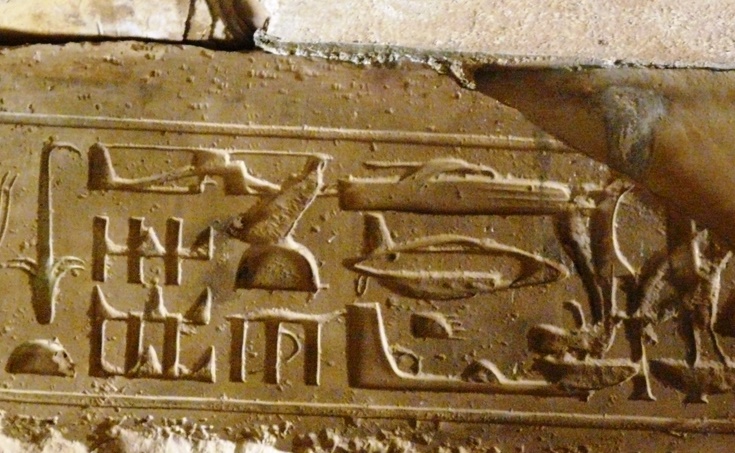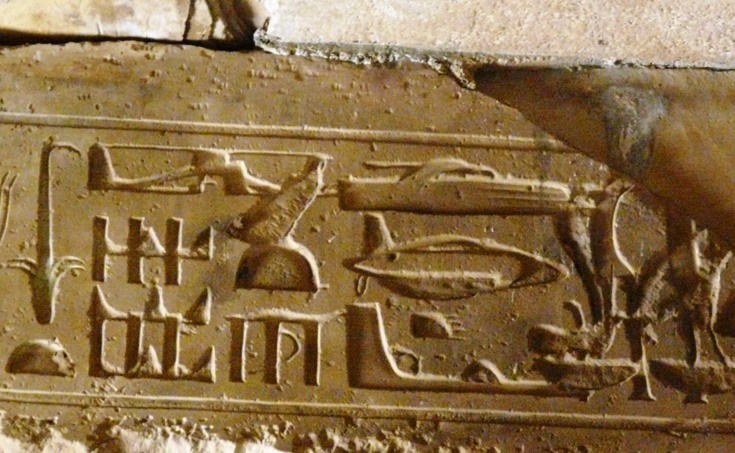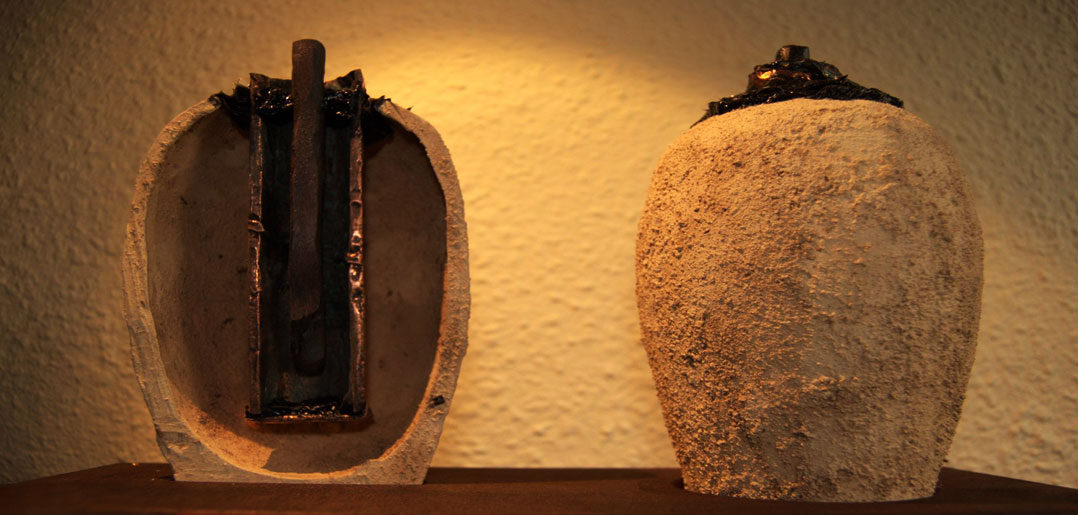How Egyptians Can Profit Off the Growing Belief that Aliens Built the Pyramids
An increasing number of people around the world believe that the pyramids were built by aliens, or with their help. Curious on how this started, we dive into this controversial debate to separate the facts from fiction while explaining how Egypt's tourism could profit off this trending belief.

There are countless theories that hypothesise on how the Great Pyramids of Giza were built, but only two theories exist on who built them – humans or aliens. Ask most Egyptologists and they will say the answer is humans. Ask the Internet and the response more often than not is that the aliens – a.k.a. 'ancient astronauts' – built the pyramids, or at least provided the technology to build the pyramids. Anyone picking a side in this growing online debate risks attracting an onslaught of haters who vehemently believe their answer to the age-old question is the correct one. In an attempt to distinguish facts from fiction, I delve into why a growing number of people are giving the credit to aliens, how this unorthodox theory originated, and – most importantly – how Egyptians can profit from ancient astronaut believers.
If you plug the words ‘aliens’ and ‘Egypt’ into Google, you will see over half a million articles and videos claiming to have proof that aliens were involved in the construction of the pyramids. For many Egyptians and Egyptologists, the mere suggestion of aliens building the pyramids is incredibly insulting as it suggests that Egypt’s ancient ancestors had neither the tools nor the intelligence to have constructed these architectural marvels. Introducing this theory to the masses was convicted criminal turned best-selling author Erich Von Daniken. This author, convicted for embezzlement, began making waves in 1968 with his novel Chariots of the Gods, which suggested that the Egyptian pyramids, Stonehenge, Nazca lines in Peru and the moai of Easter Island were made by or with the help of alien technology, and that aliens were perceived by these cultures as gods. Since the release of this controversial book, Von Daniken has been discredited by international media, architects, archaeologists, and Egyptologists, with many of his claims proven to be plagiarised and, at times, completely fabricated. Despite the collective outcry, this convicted criminal has managed to publish 29 books, selling over 63 million copies worldwide, while also coining the term 'Ancient Astronauts'.
Decades later the Internet emerges, and those obsessed with proving the existence of aliens begin recycling Von Daniken's thoughts, with some going so far as to fabricate evidence in hopes of going viral on YouTube.Take the example of this grainy black-and-white video allegedly showing the KGB discovering what is dubbed as an alien mummy. The sarcophagus bares a striking resemblance to those found in Egypt, but causing eyebrows to raise is the simple fact that it only takes two alleged officers to carry the sarcophagus out, a seemingly impossible feat considering that the average sarcophagus can weigh tons. Nevertheless, the video went viral and further misinformation spread, as very few viewers ever take the time to research and uncover the truth. This and similar hoax videos/pictures prove their ability to garner big online hits, which attracts the attention of TV studios and, before you know, it nine seasons of the History Channel’s Ancient Aliens are created based on Von Daniken’s theories – including a whole episode devoted to his legacy. This, in turn, inspires a new generation of thinkers to question any official findings by experts on any matter that doesn’t point to aliens because they saw a contradictory argument on the History Channel. It's easy to dismiss either side of this debate without doing any research, but the truth becomes less clear as one examines the arguments, as certain things can be explained by Egyptologists while other questions remain unanswered. The first controversial argument made is that each block of the pyramids weighs between 2 - 50 tons, making them incredibly difficult to move, especially without the use of the wheel. Each stone is placed and cut with such precision that it would be impossible to slip a knife between each block. 'Ancient astronaut' believers propose that the only way to do so is by using alien technology to cut, move, and place the rocks, while Egyptologists simply point to a papyrus showing many men pulling a large statue on a wooden sled, with some workers pouring water in front of the sled, ultimately making the mammoth stones easier to pull on sand.
It's easy to dismiss either side of this debate without doing any research, but the truth becomes less clear as one examines the arguments, as certain things can be explained by Egyptologists while other questions remain unanswered. The first controversial argument made is that each block of the pyramids weighs between 2 - 50 tons, making them incredibly difficult to move, especially without the use of the wheel. Each stone is placed and cut with such precision that it would be impossible to slip a knife between each block. 'Ancient astronaut' believers propose that the only way to do so is by using alien technology to cut, move, and place the rocks, while Egyptologists simply point to a papyrus showing many men pulling a large statue on a wooden sled, with some workers pouring water in front of the sled, ultimately making the mammoth stones easier to pull on sand. However, missing from this explanation is how they managed to move blocks around the corners of the pyramids and how they got them up there in the first place. The most common answer by Egyptologists is that ancient Egyptians used an exterior ramp and possibly an interior ramp to reach the top, while other critics suggest that perhaps the ancient Egyptians had a recipe for making stones and would simply pour the mixture into a mould, solving many of the unanswered questions raised above. The only problem with this theory is that no evidence has been unearthed supporting this notion.
However, missing from this explanation is how they managed to move blocks around the corners of the pyramids and how they got them up there in the first place. The most common answer by Egyptologists is that ancient Egyptians used an exterior ramp and possibly an interior ramp to reach the top, while other critics suggest that perhaps the ancient Egyptians had a recipe for making stones and would simply pour the mixture into a mould, solving many of the unanswered questions raised above. The only problem with this theory is that no evidence has been unearthed supporting this notion.
Another factor fuelling the debate is the alignment of the pyramids with the three stars that make up the Belt of Orion. The pyramids face the exact magnetic north (allegedly without the use of a compass), and its height is exactly 1/1,000,000,000th the distance between the Earth and the sun; when the perimeter of the pyramid is divided by two times the height of the monument, it equals Pi to the 15th decimal place. This vast knowledge of astronomy and mathematics led 'ancient astronaut' believers to claim mankind was too stupid to have understood these principals, while Egyptologist calls this notion offensive and incorrect. Examining the jewellery, artefacts, and other temples built at that time, Egyptologists argue that the ancient Egyptians definitely had the knowledge and were skillful craftsmen who used copper chisels to cut rocks. Furthermore, the ancient Egyptians were able to mine, purify, and manufacture stunning gold masterpieces, a skill that today’s Egyptians lack, which further drives a stake into the argument that the ancients weren’t as smart as we are now. There’s plenty of evidence that the ancients were highly intelligent, which leaves the question of where did this wealth of knowledge originate? Often, when debunking the alien theory, Egyptologists simply point to hieroglyphics or papyrus to make their case. However, two pieces of hieroglyphics often resurface in this debate as evidence that aliens visited Egypt's ancestors. The first hieroglyphic is carved into the Temple of Seti I in Abydos, which havs markings that look like a helicopter beside what some believe to be a submarine or spaceships. This remains the most baffling evidence as the technologies carved in stone have never been unearthed in Egypt.
Often, when debunking the alien theory, Egyptologists simply point to hieroglyphics or papyrus to make their case. However, two pieces of hieroglyphics often resurface in this debate as evidence that aliens visited Egypt's ancestors. The first hieroglyphic is carved into the Temple of Seti I in Abydos, which havs markings that look like a helicopter beside what some believe to be a submarine or spaceships. This remains the most baffling evidence as the technologies carved in stone have never been unearthed in Egypt. The second hieroglyphic that remains a mystery is carved into the temple of Dendera and depicts what looks exactly like a light bulb, but that Egyptologist continue to believe is just a snake in a container. However, an ancient pot was unearthed in Baghdad, which turned out to be an ancient battery they call the Baghdad Battery; some argue that this could have powered this lightbulb and given the ancient Egyptians the ability to work at night.
The second hieroglyphic that remains a mystery is carved into the temple of Dendera and depicts what looks exactly like a light bulb, but that Egyptologist continue to believe is just a snake in a container. However, an ancient pot was unearthed in Baghdad, which turned out to be an ancient battery they call the Baghdad Battery; some argue that this could have powered this lightbulb and given the ancient Egyptians the ability to work at night. There are endless claims on both sides that would require a full novel, or about 29 anti-Daniken novels, to properly rebuke the 'ancient astronaut' claim. In my opinion, the truth lies somewhere in between. One can’t deny the fascination the ancients across the planet had at that time, trying to unravel the mysteries of the universe. There were no televisions or internet, so understanding the night sky provided one of the only sources of entertainment. Perhaps these various cultures witnessed an epic event in the sky, be it a planetary event or a visiting spacecraft, which sparked an age of celestial understanding resulting in the building of humongous structures to attract attention from space.
There are endless claims on both sides that would require a full novel, or about 29 anti-Daniken novels, to properly rebuke the 'ancient astronaut' claim. In my opinion, the truth lies somewhere in between. One can’t deny the fascination the ancients across the planet had at that time, trying to unravel the mysteries of the universe. There were no televisions or internet, so understanding the night sky provided one of the only sources of entertainment. Perhaps these various cultures witnessed an epic event in the sky, be it a planetary event or a visiting spacecraft, which sparked an age of celestial understanding resulting in the building of humongous structures to attract attention from space.
Some argue that this isn’t the case as there’s evidence that suggests the Ancient Egyptians were seafarers and may have travelled to South America, as the Lady Henut Taui mummy unearthed in Egypt showed traces of cocaine and nicotine, plants commonly grown in South America. Perhaps on their trade mission, the ancient Egyptians shared their knowledge – but, once again, this is mere speculation, proving that everyone has their own opinion, which is why this debate rages on endlessly.
Believing that aliens can’t exist in a vast universe that we barely understand is as ignorant as an Egyptologist who negates any evidence that runs counter to their official story. Those who support the alien/ancient astronaut theory do so because it sounds like a cooler story that unifies various ancient cultures from mankind’s mysterious past. The truth is, we may never know exactly what inspired the building of the pyramids or even how the pyramids were built, but finding a way to marry these theories would definitely attract more tourism to a country in desperate need of foreign currency. If tourism is to recover in this country, it will require some creativity and should consider taking a page out of the Von Daniken playbook and establishing ancient astronaut tours. This would give ancient astronaut believers a chance to see the evidence for themselves while finally finding a way to profit off Von Daniken's theories. This kind of tour would be interesting, profitable, and could possibly change opinions while hammering home the fact that whether ancient Egyptians received alien help or not, it still required a lot of intelligence to adopt the technology and put it to impressive use.
- Previous Article Was The Viral "Tuktuk Graduate" Arrested?
- Next Article 10 Strictly Egyptian Moustaches That Will Inspire You This Movember























